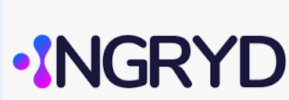Software Development Fundamentals
This 15-session course introduces you to software development, a growing and rapidly changing field that is becoming increasingly vital to business survival, job stability, and national security. Each session is approximately two hours long.
Back To List Enroll & Start Add To Cart
chapter 1.
Session 1 – Software and its Evolution
1.2.1 What is Software?
1.2.2 Software Types
1.2.3 History of Software
1.2.4 Mainframe Era
1.2.5 Personal Computer and Desktop Software Era
1.2.6 Cloud Computing Era
1.2.7 Y2K Bug
chapter 2.
Session 2 – Software Basics
1.2.8 Algorithms
1.2.9 Differences Among Syntax, Semantics, and Lexis
1.2.11 Analyze Problem
1.2.12 Design Model
1.2.13 Analyze Algorithm
1.2.14 Develop Program
1.2.15 Test Program
1.2.16 Document Solution
1.2.17 Functional vs. Object-Oriented Programming (OOP)
1.2.18 Influential Software Enterprises
chapter 3.
Session 3 – Machine Language
1.3.1 Introduction
1.3.2 Central Processing Unit
1.3.3 Instruction Set
1.3.4 CISC and RISC Instruction Set Architecture Differences
1.3.5 Machine Code Language
1.3.6 ASCII and Unicode
1.3.7 Assembly Machine Language
1.3.8 Interpreters and Compilers
chapter 4.
Session 4 – High-level Languages
1.3.9 Scripting
1.3.10 Applications of Scripting Languages
1.3.11 JAVA and .NET Virtual Machines
1.3.12 Portability of Code
1.4.1 Overview
1.4.2 Procedural and Nonprocedural
1.4.3 C and C++
1.4.4 JAVA
1.4.5 HTML
1.4.6 Integrated Development Environment (IDE)
1.4.7 Python
1.4.8 .NET Suite and Visual C++
chapter 5.
chapter 6.
Session 6 – Programming Basics
2.3.1 Synchronous and Asynchronous Processing
2.3.2 Boolean Logic and Operators
2.3.3 Control Structures
2.3.4 If Decision Making
chapter 7.
Session 7 – Repetition Constructs and Data Structures
2.3.5 While Loops
2.3.6 Infinite While Loops
2.3.7 Do While Loops
2.3.8 For While Loops
2.3.9 Nested Loops
2.3.10 Data Structures
chapter 8.
Session 8 – Output
2.4.1 Output to Peripherals
2.4.2 Data Storage Types
2.4.3 Retrieving Information
2.4.4 Updating Information
2.4.5 Deleting Information
chapter 9.
Session 9 – Software Development Standards
3.2 Overview
• 3.2.1 ISO/IEC/IEEE 12207:2017
3.2.2 ISO/IEC/IEEE 15289:2011
3.2.3 IEEE Std 730-2014
• 3.2.4 ISO/IEC/IEEE 90003 (except SDLC)
chapter 10.
Session 10 – Software Development Life Cycle - 1
3.2.4 ISO/IEC/IEEE 90003 (SDLC)
3.3.1 Planning Phase
3.3.2 Software Requirements Analysis
3.3.3 Scheduling and Team Assembly
3.3.4 Roles and Responsibilities
3.3.5 Communication Plan
3.3.6 Risk Management
3.3.7 Benchmarking
chapter 11.
Session 11 – Software Development Life Cycle - 2
3.3.8 Designing Phase
3.3.9 Implementation Phase
3.3.10 Testing and Integration Phase
3.3.11 Quality Assurance Responsibilities
3.3.13 Testing and Integration Automation
3.3.14 Defect Analysis
3.3.15 Deployment
3.3.16 Maintenance Phase
3.3.17 End of Life
chapter 12.
Session 12 – SDLC Models – 1
3.4 SDLC Management
3.4.1 SDLC Models—Waterfall
3.4.2 SDLC Models—Agile
3.4.3 The Agile Manifesto
chapter 13.
Session 13 – SDLC Models - 2
3.4.4 Agile Development Frameworks
3.4.5 User Stories
3.4.6 Assigning Effort Points
3.4.7 Features and Epics
3.4.8 Planning and Schedules
3.4.9 Burndown and Velocity Charts
3.4.10 Scrum
3.4.11 SCRUM Roles and Responsibilities
3.4.12 Extreme Programming (XP)
3.4.13 Feature-Driven Development (FDD)
chapter 14.
Session 14 – SDLC Models - 3
3.4.14 Choosing a Methodology
3.4.15 Versioning and Repositories
3.4.16 Software Versioning Schemes
3.4.17 Repository Mechanics
3.4.18 Repository Code Branches Structure
chapter 15.
chapter 1.
Session 1 – Software and its Evolution
1.2.1 What is Software?
1.2.2 Software Types
1.2.3 History of Software
1.2.4 Mainframe Era
1.2.5 Personal Computer and Desktop Software Era
1.2.6 Cloud Computing Era
1.2.7 Y2K Bug
chapter 2.
Session 2 – Software Basics
1.2.8 Algorithms
1.2.9 Differences Among Syntax, Semantics, and Lexis
1.2.11 Analyze Problem
1.2.12 Design Model
1.2.13 Analyze Algorithm
1.2.14 Develop Program
1.2.15 Test Program
1.2.16 Document Solution
1.2.17 Functional vs. Object-Oriented Programming (OOP)
1.2.18 Influential Software Enterprises
chapter 3.
Session 3 – Machine Language
1.3.1 Introduction
1.3.2 Central Processing Unit
1.3.3 Instruction Set
1.3.4 CISC and RISC Instruction Set Architecture Differences
1.3.5 Machine Code Language
1.3.6 ASCII and Unicode
1.3.7 Assembly Machine Language
1.3.8 Interpreters and Compilers
chapter 4.
Session 4 – High-level Languages
1.3.9 Scripting
1.3.10 Applications of Scripting Languages
1.3.11 JAVA and .NET Virtual Machines
1.3.12 Portability of Code
1.4.1 Overview
1.4.2 Procedural and Nonprocedural
1.4.3 C and C++
1.4.4 JAVA
1.4.5 HTML
1.4.6 Integrated Development Environment (IDE)
1.4.7 Python
1.4.8 .NET Suite and Visual C++
chapter 5.
chapter 6.
Session 6 – Programming Basics
2.3.1 Synchronous and Asynchronous Processing
2.3.2 Boolean Logic and Operators
2.3.3 Control Structures
2.3.4 If Decision Making
chapter 7.
Session 7 – Repetition Constructs and Data Structures
2.3.5 While Loops
2.3.6 Infinite While Loops
2.3.7 Do While Loops
2.3.8 For While Loops
2.3.9 Nested Loops
2.3.10 Data Structures
chapter 8.
Session 8 – Output
2.4.1 Output to Peripherals
2.4.2 Data Storage Types
2.4.3 Retrieving Information
2.4.4 Updating Information
2.4.5 Deleting Information
chapter 9.
Session 9 – Software Development Standards
3.2 Overview
• 3.2.1 ISO/IEC/IEEE 12207:2017
3.2.2 ISO/IEC/IEEE 15289:2011
3.2.3 IEEE Std 730-2014
• 3.2.4 ISO/IEC/IEEE 90003 (except SDLC)
chapter 10.
Session 10 – Software Development Life Cycle - 1
3.2.4 ISO/IEC/IEEE 90003 (SDLC)
3.3.1 Planning Phase
3.3.2 Software Requirements Analysis
3.3.3 Scheduling and Team Assembly
3.3.4 Roles and Responsibilities
3.3.5 Communication Plan
3.3.6 Risk Management
3.3.7 Benchmarking
chapter 11.
Session 11 – Software Development Life Cycle - 2
3.3.8 Designing Phase
3.3.9 Implementation Phase
3.3.10 Testing and Integration Phase
3.3.11 Quality Assurance Responsibilities
3.3.13 Testing and Integration Automation
3.3.14 Defect Analysis
3.3.15 Deployment
3.3.16 Maintenance Phase
3.3.17 End of Life
chapter 12.
Session 12 – SDLC Models – 1
3.4 SDLC Management
3.4.1 SDLC Models—Waterfall
3.4.2 SDLC Models—Agile
3.4.3 The Agile Manifesto
chapter 13.
Session 13 – SDLC Models - 2
3.4.4 Agile Development Frameworks
3.4.5 User Stories
3.4.6 Assigning Effort Points
3.4.7 Features and Epics
3.4.8 Planning and Schedules
3.4.9 Burndown and Velocity Charts
3.4.10 Scrum
3.4.11 SCRUM Roles and Responsibilities
3.4.12 Extreme Programming (XP)
3.4.13 Feature-Driven Development (FDD)
chapter 14.
Session 14 – SDLC Models - 3
3.4.14 Choosing a Methodology
3.4.15 Versioning and Repositories
3.4.16 Software Versioning Schemes
3.4.17 Repository Mechanics
3.4.18 Repository Code Branches Structure
